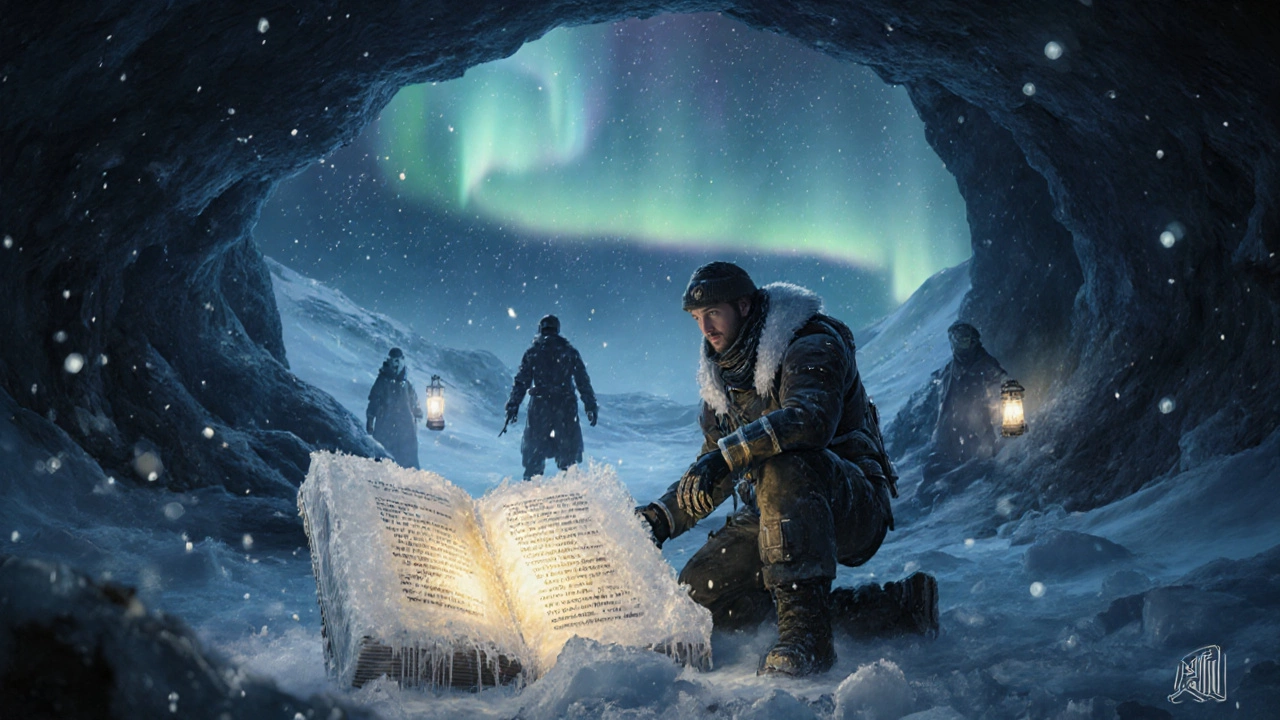How to Choose a Compelling Adventure Story Topic
 Oct, 18 2025
Oct, 18 2025
Adventure Story Topic Validator
Check Your Adventure Story Concept
Enter your adventure story concept and let us help you evaluate if it meets the key criteria for a compelling adventure story.
Finding a great adventure story topic can feel like searching for treasure in a desert-sometimes you stumble on a gem, other times you end up with a mirage. The right topic not only sparks your imagination but also gives readers a reason to strap in for the ride. Below you’ll discover a step‑by‑step way to pick a punchy adventure premise that keeps the page turning.
What Makes an Adventure Story Topic Work?
Adventure story topic is a seed of conflict that thrusts a character into an unknown world, stakes high enough to matter, and a goal that feels both urgent and personal. It’s not just “a guy goes on a trek”; it’s a situation that promises danger, discovery, and change. When the premise checks three boxes-clear goal, compelling risk, and vivid setting-it becomes a launchpad for a full‑blown narrative.
The Core Ingredients of a Good Topic
Every great adventure starts with a handful of building blocks. Think of them as the puzzle pieces you’ll later assemble into a complete picture.
- Protagonist: Who’s in the hot seat? A reluctant farmer, a seasoned explorer, or a curious teen? The hero’s skills, flaws, and motivations shape how the story unfolds.
- Goal: What does the hero want? It could be a lost artifact, a rescued sibling, or a personal redemption.
- Stakes: Why does it matter? The higher the personal cost, the deeper the reader’s investment.
- Setting: Where does the adventure unfold? A mist‑shrouded jungle, a crumbling mountain citadel, or a future floating city each brings its own hazards.
- Conflict: What obstacles block the goal? Natural forces, rival factions, internal doubts, or a ticking clock add tension.
- Hook: What grabs the reader in the first page? A bizarre mystery, a sudden betrayal, or an unexpected discovery keeps eyes glued.
Brainstorming Techniques that Spark Fresh Topics
Stuck in a creative rut? Try one of these proven methods to shake loose new ideas.
- What‑If Questions: Start with “What if a modern city was built inside a volcano?” Then ask, “What would someone have to do to survive there?”
- Map Mining: Grab a world map or a satellite view, pick a remote region, and ask what treasures or dangers lie hidden there.
- Historical Hooks: Take a real expedition-like the 1920s search for the Amber Room-and spin a fictional twist.
- Personal Experience: Recall a time you felt out of your depth-maybe a hiking mishap-and amplify it with higher stakes.
- Genre Mash‑Up: Blend adventure with another genre, such as sci‑fi or mythic fantasy, to create fresh terrain.
Top 10 Ready‑to‑Use Adventure Story Topics
If you need a jump‑start, here are ten fully‑formed premises. Feel free to steal the structure and swap in your own details.
- The Icebound Cipher: A linguist discovers a frozen codex in Antarctica that promises to reveal the location of an ancient city-but rival scientists will stop at nothing to claim it first.
- Midnight Train to the Lost Vale: A disgraced railway engineer must repair a ghost train that appears only at midnight, transporting passengers to a valley erased from maps.
- Rogue AI on the Savannah: In a near‑future African savannah, a drone‑pilot must outwit a self‑learning AI that’s turned wildlife conservation into a deadly game.
- The Coral Crown: A marine biologist dives for a pearl said to control the tides, only to discover a corrupt syndicate that wants to weaponize the ocean.
- Vault of the Sky Pirates: A teenage cartographer uncovers a sky‑ship blueprint leading to a floating fortress guarded by descendants of 18th‑century air pirates.
- Echoes of the Ember Trail: After a volcanic eruption buries a historic trade route, a local guide races against time to retrieve a priceless relic before the lava solidifies forever.
- The Desert’s Whispering Library: An archivist discovers a secret library hidden beneath dunes, where each book contains a living memory of the world’s lost explorers.
- Quantum Canyon: A physicist’s experiment opens a canyon where past, present, and future intersect, forcing her to prevent a catastrophe that could rewrite history.
- Shadow of the Red Mountain: An ex‑soldier is hired to escort a caravan through a volcano believed to house a sleeping dragon that awakens each century.
- The Forgotten Carnival: A circus troupe stumbles upon a forgotten carnival town that appears only once every decade, offering a chance to heal old wounds-if they survive its twisted games.
Checklist: Does Your Topic Have What It Needs?
- Clear goal that the protagonist actively pursues.
- High‑stakes conflict that threatens something the hero values.
- Vivid, sensory‑rich setting that influences the plot.
- A compelling hook within the first 1,000 words.
- Room for character growth-your protagonist should change by the end.
- Potential for a satisfying resolution that ties the main threads together.
Common Pitfalls and How to Dodge Them
Even seasoned writers fall into traps. Recognize them early and adjust.
- Vague goals: If the hero’s objective is “find something cool,” readers won’t care. Specify the object and why it matters personally.
- Over‑complicated settings: Too many exotic locations can confuse the reader. Stick to one or two vivid places and flesh them out.
- Lack of personal stakes: Global danger is exciting, but the hero must also face a personal loss or fear.
- Flat conflict: Avoid obstacles that are easily solved; introduce twists (e.g., a trusted ally turns traitor).
- Predictable hook: If the opening mirrors dozens of other stories, the reader may click away. Add an unexpected element.

Comparison Table: Classic Themes vs. Modern Settings
| Classic Theme | Typical Setting (Traditional) | Modern Twist | Contemporary Setting |
|---|---|---|---|
| Quest for Treasure | Jungle temple | Tech‑driven treasure hunt | Abandoned data centre |
| Rescue Mission | Mountain pass | Time‑critical extraction | High‑altitude space station |
| Exploration of Unknown | Uncharted island | Virtual reality frontier | Deep‑sea bio‑dome |
| Survival Against Nature | Desert trek | Ecological collapse | Post‑climate‑change megacity |
Next Steps: Turn Your Topic into a Full Draft
Now that you have a solid premise, follow this quick workflow to keep momentum:
- Write a one‑sentence logline that includes the protagonist, goal, and main obstacle.
- Sketch the three‑act structure: set‑up, confrontation, resolution.
- Develop a character arc: note where the hero starts, the midpoint crisis, and the final change.
- Populate a scene list-each scene should push the hero closer to or farther from the goal.
- Draft the first 2,000 words without editing; focus on getting the adventure feel across.
When you hit a wall, go back to the checklist. If a piece feels weak, tweak the premise until it clicks.
Frequently Asked Questions
How specific should my adventure story topic be?
A good balance is specific enough to give clear direction (e.g., “recover a lost Viking map in the Arctic”) but broad enough to allow creative freedom. If it’s too vague, you’ll struggle to build tension; if it’s too rigid, you may choke the plot.
Can I combine multiple adventure themes in one story?
Absolutely. Mixing, say, a treasure hunt with a survival‑against‑nature element can deepen stakes. Just ensure the combined themes share a common goal so the narrative stays focused.
What’s a quick way to test if my topic is engaging?
Pitch the premise to a friend in one sentence. If they ask, “What happens next?” or they’re instantly curious, you’ve got a strong hook. If they’re confused or uninterested, revisit the goal or stakes.
How do I keep the adventure feeling fresh across a series?
Introduce new settings, evolve the protagonist’s skill set, and raise the stakes each book. A recurring theme can tie the series together, but the core conflict should shift in scale or focus.
Should I outline before I start writing?
Most writers find a light outline-logline, three‑act beats, and major obstacles-helps maintain momentum while leaving room for spontaneous twists. Heavy plotting can stifle the spontaneity that adventure thrives on.